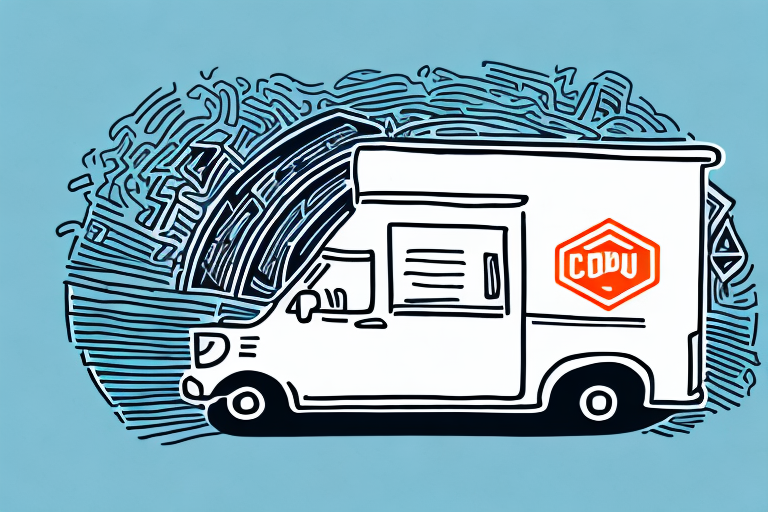What Is Contactless Delivery? Understanding Its Benefits and Challenges
In response to the COVID-19 pandemic, many businesses have embraced contactless delivery as a safe and efficient method to meet customer needs. But what exactly is contactless delivery, and how does it function? This article delves into the benefits and challenges of contactless delivery, exploring its impact on customers, businesses, and society.
How Contactless Delivery Works
Contactless delivery refers to the process of delivering goods or services without any physical interaction between the customer and the delivery personnel. This method is achieved through various strategies, including:
- Leaving packages at doorsteps or designated pickup locations
- Utilizing delivery lockers
- Implementing advanced technologies like drones and autonomous vehicles
During the COVID-19 pandemic, the adoption of contactless delivery surged as businesses sought to minimize the risk of virus transmission. Customers can now order products such as food, groceries, and other essentials online and have them delivered safely to their doorsteps, enhancing both safety and convenience.
The Rise of Contactless Delivery During the Pandemic
The pandemic accelerated the shift towards contactless delivery, driven by the need to adhere to social distancing guidelines and reduce the spread of the virus. According to a 2023 industry report, the demand for contactless delivery services increased by 35% compared to pre-pandemic levels.
Beyond health safety, contactless delivery offers significant convenience. Customers can receive their orders without being physically present, allowing for greater flexibility and time management. This shift not only met immediate safety needs but also set a new standard for delivery services.
Advantages of Contactless Delivery
For Customers
- Safety and Security: Minimizes physical contact, reducing the risk of exposure to viruses and germs.
- Convenience: Enables customers to receive deliveries at their preferred times without being present.
- Real-Time Tracking: Allows customers to monitor their orders in real-time, enhancing transparency and control.
For Businesses
- Reduced Operational Costs: Minimizes the need for in-person interactions, lowering labor and overhead costs.
- Increased Efficiency: Streamlines the delivery process through automation and optimized logistics.
- Enhanced Reputation: Demonstrates a commitment to customer safety, fostering trust and loyalty.
Challenges of Implementing Contactless Delivery
Despite its advantages, adopting contactless delivery poses several challenges for businesses:
- Technology and Infrastructure: Requires investment in advanced delivery systems such as lockers, drones, and real-time tracking software.
- Security Concerns: Ensuring the safety and integrity of deliveries without direct customer interaction.
- Environmental Impact: Increased packaging and potential waste due to single-use materials necessitate sustainable solutions.
- Customer Communication: Effectively conveying new delivery protocols and handling customer queries.
Best Practices for Effective Contactless Delivery
To ensure successful implementation of contactless delivery, businesses should consider the following best practices:
- Secure Delivery Methods: Utilize reliable systems such as sealed lockers and verified delivery pathways.
- Clear Instructions: Provide customers with detailed delivery instructions to ensure packages reach the intended location.
- Technology Integration: Implement real-time tracking and automated notifications to keep customers informed.
- Personal Protective Equipment (PPE): Equip delivery personnel with necessary PPE to maintain safety standards.
- Contactless Payments: Offer digital payment options to further reduce physical interactions.
Innovative Contactless Delivery Methods
Advancements in technology continue to expand the possibilities of contactless delivery. Some of the latest innovations include:
Autonomous Ground Vehicles (AGVs)
AGVs are equipped with sensors and navigation systems, enabling them to deliver packages autonomously. These vehicles offer a cost-effective and eco-friendly alternative to traditional delivery methods.
Drones and Unmanned Aerial Vehicles (UAVs)
Drones can deliver packages quickly and efficiently, especially in hard-to-reach areas. Their use reduces delivery times and lowers the carbon footprint associated with conventional delivery trucks.
Delivery Robots
Robotic delivery systems can navigate sidewalks and urban environments to deliver goods directly to customers' doorsteps, enhancing the speed and efficiency of the delivery process.
The Future of Contactless Delivery
As consumer preferences continue to evolve, contactless delivery is likely to remain a staple in the delivery landscape. The persistent growth of e-commerce and advancements in delivery technology suggest that contactless methods will become increasingly sophisticated and widespread.
According to a 2023 delivery trends report, contactless delivery is expected to account for over 50% of all deliveries by 2025, driven by ongoing innovations and sustained consumer demand for safe and convenient delivery options.
Evaluating Customer Satisfaction
To maintain high levels of customer satisfaction, businesses must continuously assess and refine their contactless delivery processes. Key strategies include:
- Feedback Mechanisms: Implement surveys and feedback forms to gather customer opinions and identify areas for improvement.
- Analytics Tools: Utilize data analytics to monitor delivery performance and customer behavior patterns.
- Responsive Adjustments: Adapt delivery practices based on customer feedback and emerging trends to enhance the overall experience.
Legal Considerations for Contactless Delivery
When adopting contactless delivery methods, businesses must navigate various legal considerations, including:
- Data Privacy: Ensure compliance with data protection regulations when handling customer information.
- Liability: Define responsibility in cases of lost or damaged packages during the delivery process.
- Regulatory Compliance: Adhere to local and national laws governing delivery operations, especially when using drones or autonomous vehicles.
Consulting with legal experts can help businesses navigate these complexities and implement compliant contactless delivery solutions.
Conclusion
Contactless delivery has transformed the way businesses operate, offering a safer and more convenient alternative to traditional delivery methods. While it presents several benefits, including enhanced safety, convenience, and operational efficiency, it also comes with challenges that businesses must address to ensure successful implementation.
By adopting best practices, leveraging innovative technologies, and remaining mindful of legal and environmental considerations, businesses can effectively integrate contactless delivery into their operations. As the demand for safe and efficient delivery options continues to grow, contactless delivery is poised to become a lasting component of the modern delivery landscape.




















